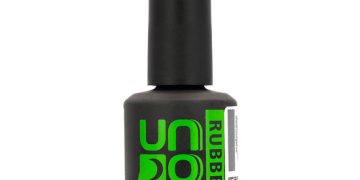If you are thinking about buying a diamond ring, one of the first questions you will want to ask is whether you should buy an GIA diamond or a lab-grown diamond. The difference between these two types of diamonds is important, especially if you are looking for a diamond ring that is durable and will last for many years. Here are some of the most important things to consider when deciding between the two.
Color grading
If you are looking to buy a lab grown diamond, you have two options: IGI and GIA. IGI is a leading gemological institute that has been a leader in grading and certifying lab grown diamonds since the early days of the industry.
When it comes to comparing the igi vs gia lab grown color grading systems, there are a number of factors to consider. First, both systems have their strengths and weaknesses. However, the IGI system has a slight edge.
The GIA system is not as strict as the IGI system when it comes to grading natural diamonds. On the other hand, GIA is very good at grading lab grown diamonds. GIA is also known for a variety of educational resources that help educate gemologists.
The IGI system is the gold standard in the industry. It has a robust ocular ray-tracing assessment that measures light performance. The IGI Hearts and Arrows Diamond Report is a good example of this. This report assesses a diamond’s 4Cs (color, clarity, cut and carat weight) in a plotted diagram.
Clarity grading
The Gemological Institute of America (GIA) is one of the most recognized grading bodies in the world. They have labs all over the globe and are known for their rigorous grading standards. Their grading reports include a description of the characteristics of the diamond. They offer independent appraisal services, educational centres and research facilities.
GIA has been a dominant player in the grading market for mined diamonds. They are also the most popular gem lab for major jewelry chains. However, GIA took a few risks when it came to grading lab grown diamonds.
While GIA was stricter, IGI was more relaxed. In most cases, IGI and GIA assigned the same clarity grade and color. The only exceptions were 4 cases where IGI was looser and 10 cases where IGI was stricter.
Both GIA and IGI are considered by industry professionals to be fair when it comes to grading. The difference is that IGI provides a cheaper certification. It is 12% less expensive than GIA.
Price
The price of GIA lab grown diamonds has fallen quite a bit in recent years. But they do still have a resale value. As such, consumers need to be sure they are purchasing the best of the crop.
As the industry has evolved, IGI Vs GIA Diamonds has followed suit. They have relaunched the same grading system that is used for natural diamonds. The grading system is considered the gold standard. In addition, GIA will ensure that every lab grown diamond they grade is certified. This is due to pressure from the jewelry industry and consumer concerns.
GIA is a jeweler’s institution and a major contributor to the diamond industry. Its grading system has been around for over 80 years. The best part is that they are able to provide all the information that consumers want regarding lab grown diamonds.
In addition to their grading system, GIA also offers a range of services. Their site provides an overview of all certified lab grown diamonds. There are also high resolution pictures of lab grown diamonds on their site. GIA has also recently announced a new grading policy on lab grown diamonds, which is expected to be in effect by 2020.
GIA-certified diamonds
The market value of a GIA-certified diamond is significantly higher than that of non-certified diamonds. This is because they have been independently evaluated and confirmed by experts in the gemological industry.
Unlike other labs, the GIA has strict grading standards and the diamonds must meet them. It is considered the most reputable diamond grading company. In addition, its assessments are the most trusted in the jewelry industry.
If you are a high-end diamond buyer, you may be willing to pay a bit extra for peace of mind. In this case, you can look at a Diamond Origin Report. It will contain details about the diamond’s basic stats, such as color, clarity, and proportions.
Conclusion
However, GIA-certified diamonds are also very expensive. You may want to know how to save money on your diamond purchase. There are a few ways to do this.The information provided on the Diamond Origin Report is crucial. This report contains all the key details about the diamond, including the quality and proportions of its cut, polish, and symmetry.
















